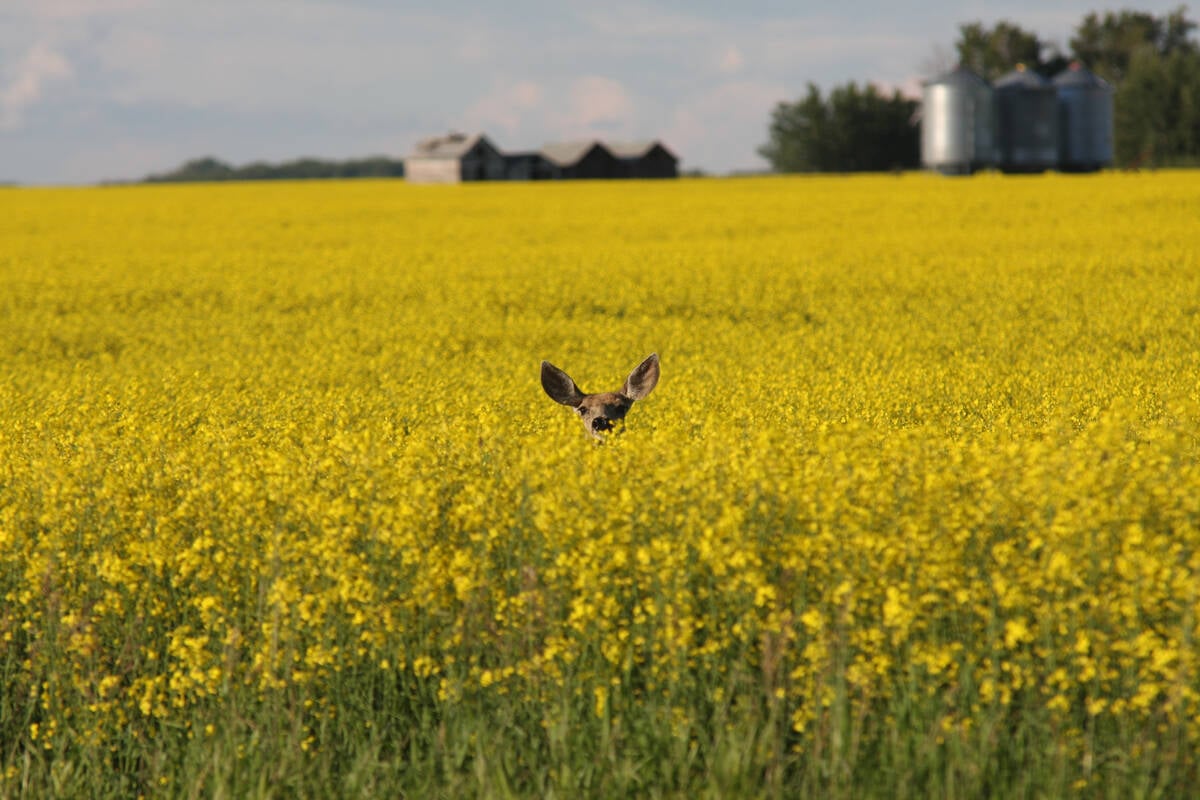SASKATOON – CN Rail says the Sask-atchewan government is scaring off potential investors in the province by spreading misinformation about the fate of the province’s branch line network.
But the province’s agriculture minister says the province is simply telling farmers what’s in the federal government’s transportation reform proposals.
“We haven’t pretended to predict which lines are going to be abandoned and when,” said Darrel Cunningham. “We’ve just commented on the federal government’s legislation to lift protection from all branch lines.”
In a letter sent last week to newspapers across Saskatchewan, Rick Boyd, CN’s senior vice-president for Western Canada, said the railway has no intention of dismantling its rail system in the province.
Read Also

Drones now used to assess wildlife crop damage in Saskatchewan
Wildlife damage in Saskatchewan crops is now assessed by drones and artificial intelligence.
“The premier has stated that 450 Saskatchewan communities face imminent loss of their rail lines,” said Boyd. “This is completely untrue.”
Last month premier Roy Romanow said the federal proposal to lift abandonment protection from prairie branch lines could remake the map of the province.
“This has the potential of having the biggest negative impact to rural Saskatchewan of anything going,” he told delegates to the annual convention of the Saskatchewan Association of Rural Municipalities.
But Boyd said the railway has told provincial officials that the railway’s goal is to keep 80 percent of its existing Saskatchewan network fully operational in the years ahead.
There will be abandonments, but they will mainly involve about 740 kilometres of light steel lines that can’t carry fully loaded hopper cars. That represents about 14 percent of the nearly 5,500 km of CN track in Saskatchewan (there are no light steel lines in Alberta and two lines totalling 192 km in Manitoba).
Must be financially viable
As for the remaining branch lines, Boyd said CN has no incentive to abandon lines as long as there is enough grain delivered to make the line financially viable.
The CN vice-president said that since the premier’s remarks, the railway has received calls from people who have built new facilities on CN lines and are now worried about their future, and from potential investors in new plants who are now reconsidering.
“The premier’s remarks serve only to discourage people from putting money into projects that will benefit the province as a whole,” he said.
Cunningham said the best way to put people’s minds at ease would be for CN and the federal government to provide some firm guarantees about the future of the province’s rail network.
“If someone from the feds or CN is prepared to say 80 percent of the branch lines will stay, and which 80 percent, that would be good news,” he said. “But I certainly haven’t heard that from anybody in authority.”
And he’s not reassured by CN’s statement that its goal is to keep 80 percent of its lines in service, given that the railway is up for sale and will likely become a privately owned company.
“It seems to me a private company will do whatever is best for the bottom line, and what’s best for the bottom line of CN certainly may not be what’s best for the overall cost of moving grain,” said Cunningham.














